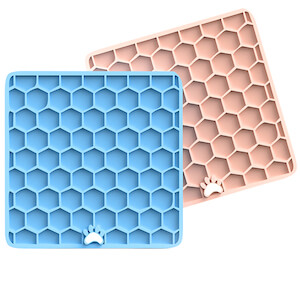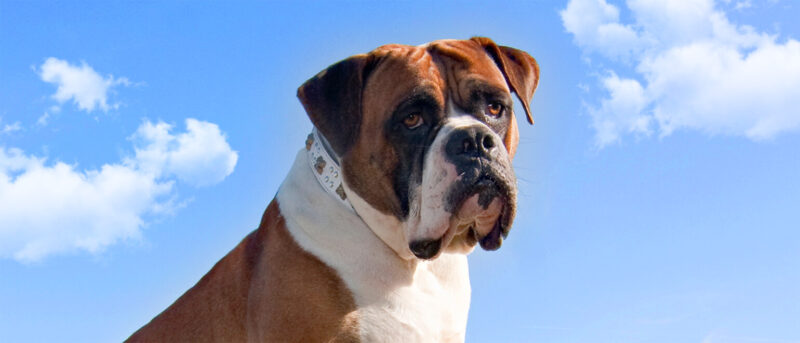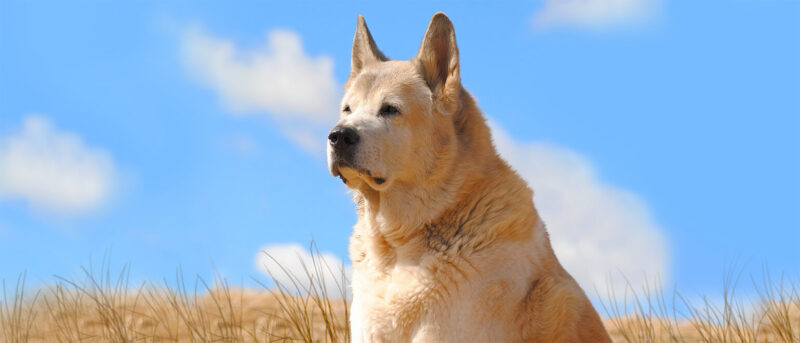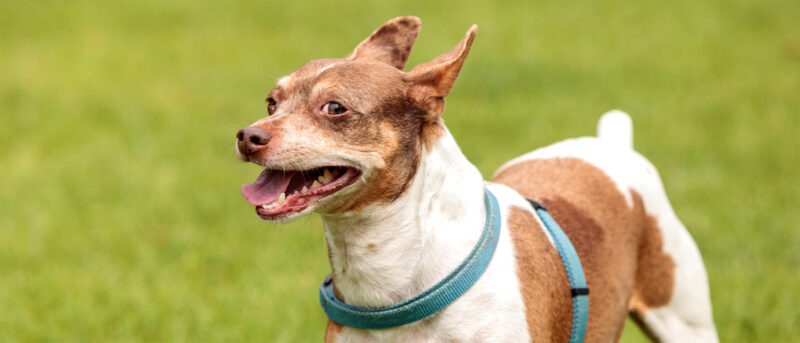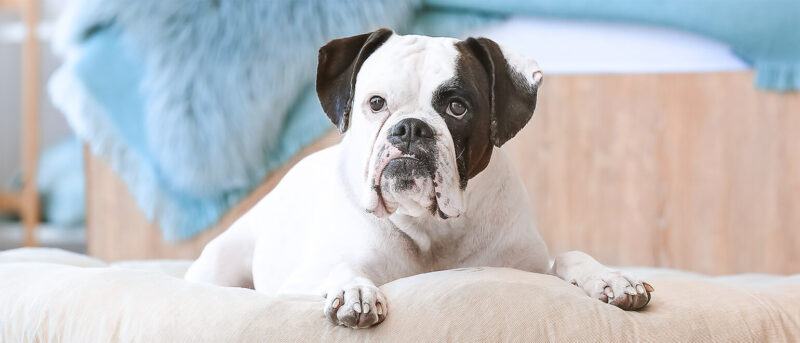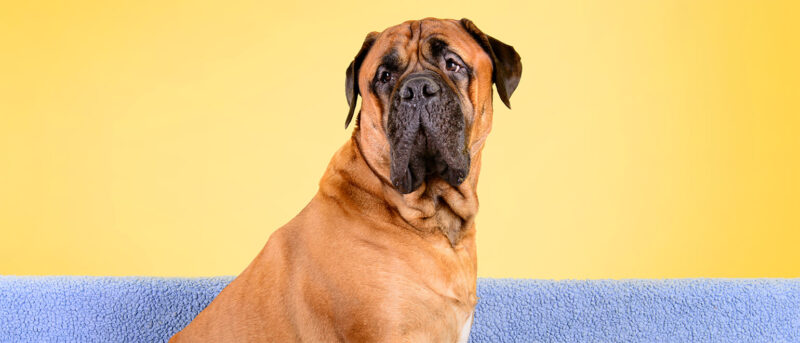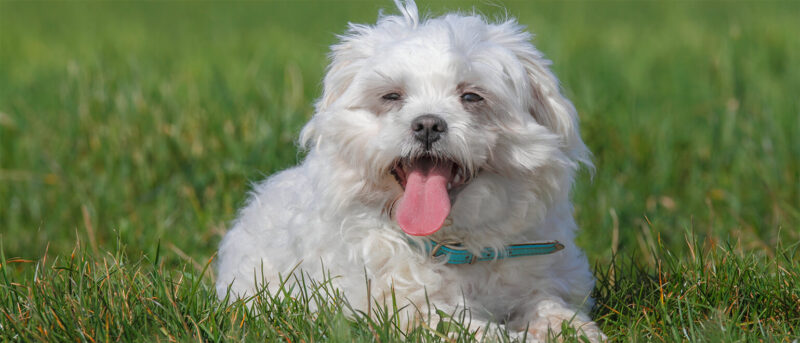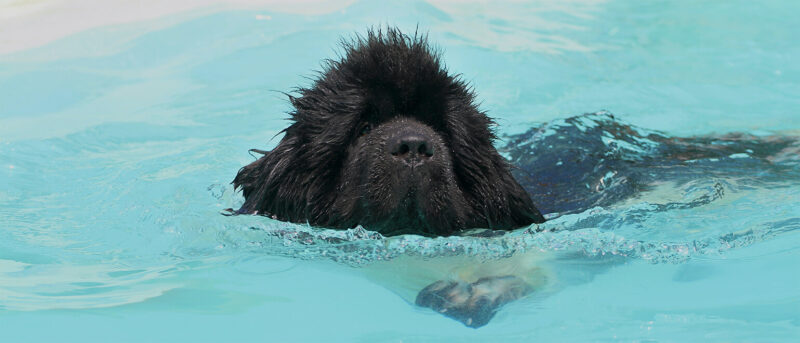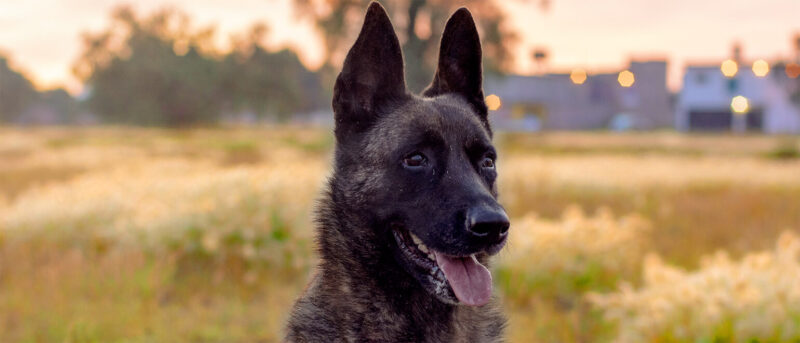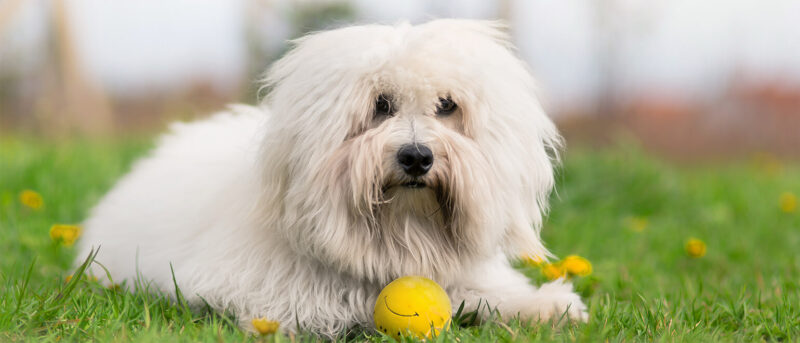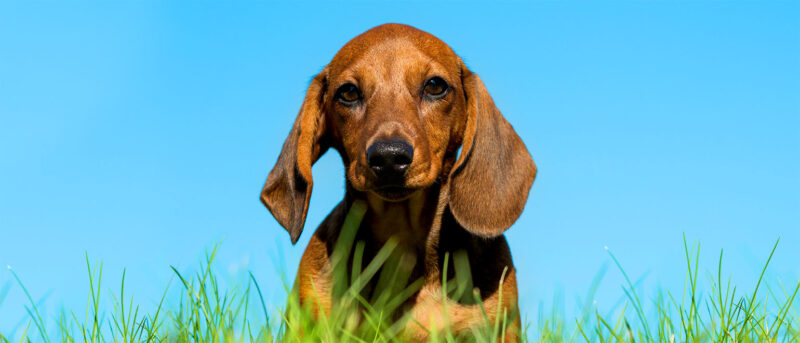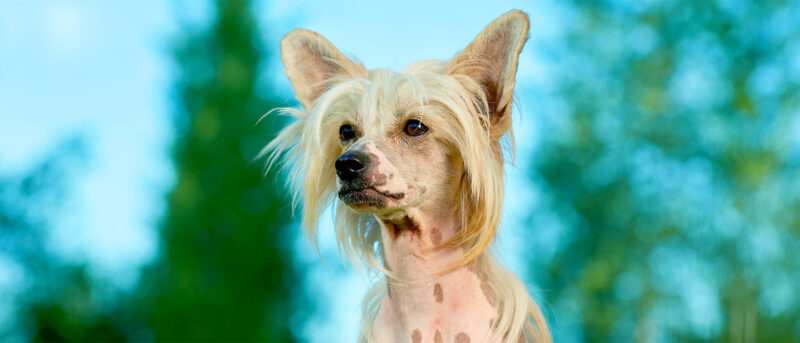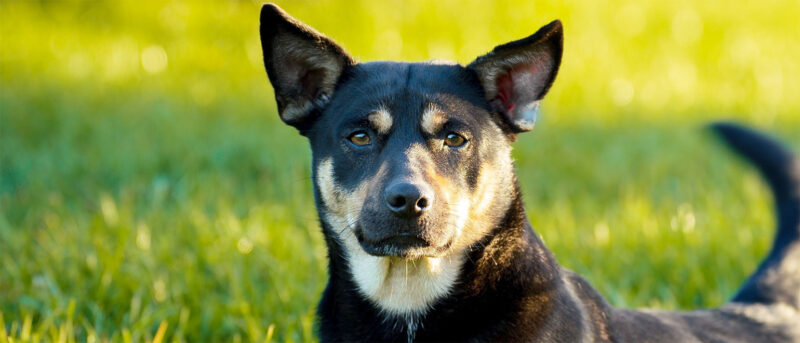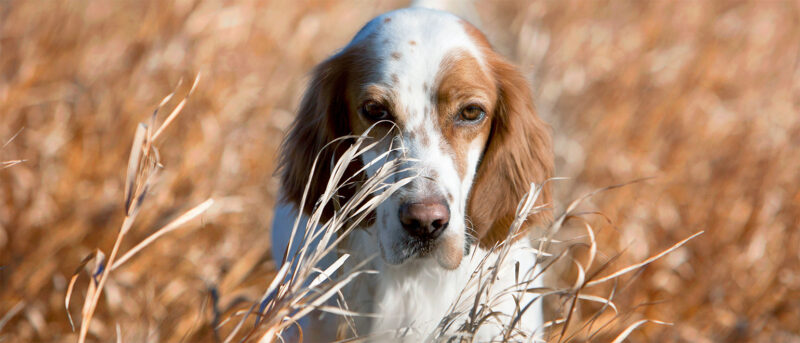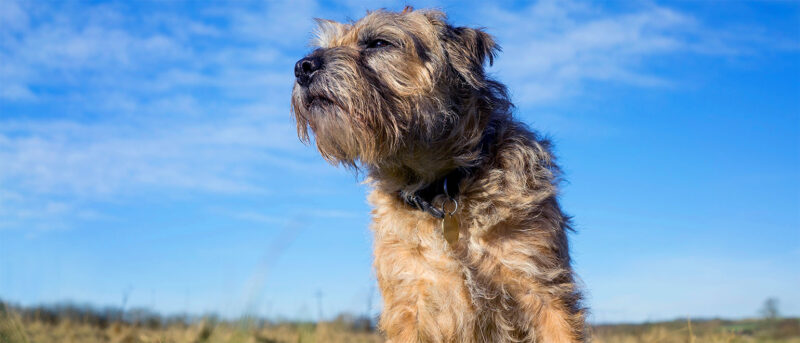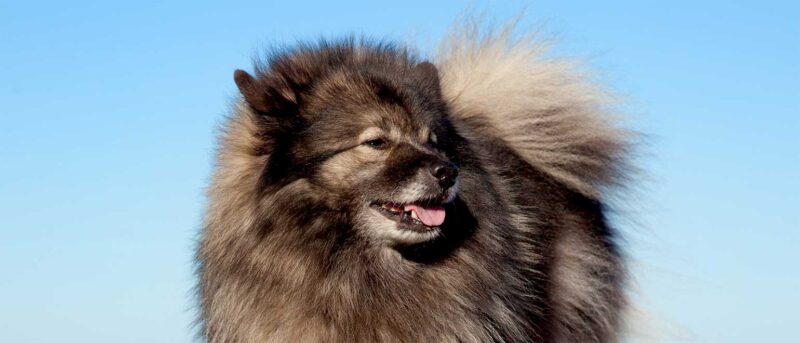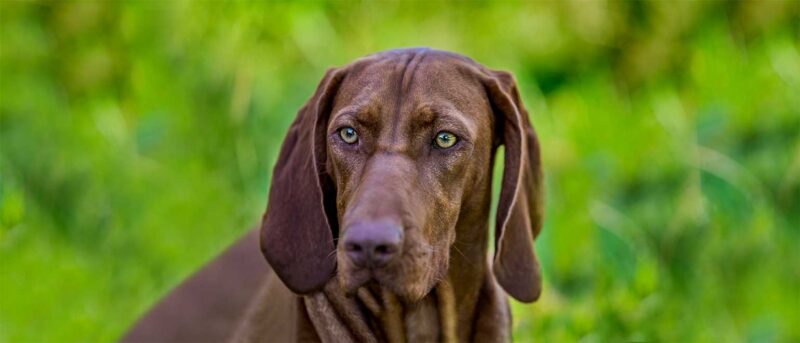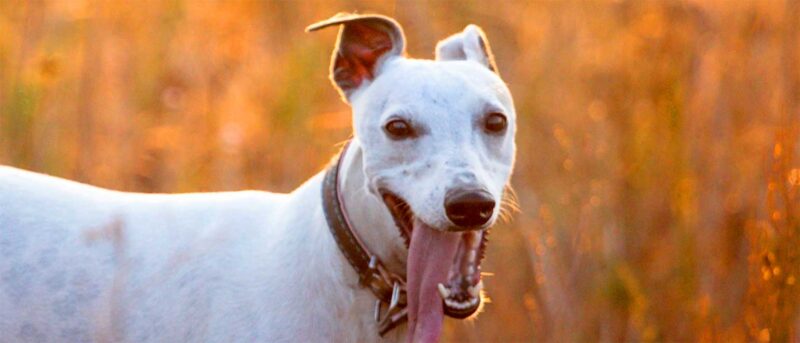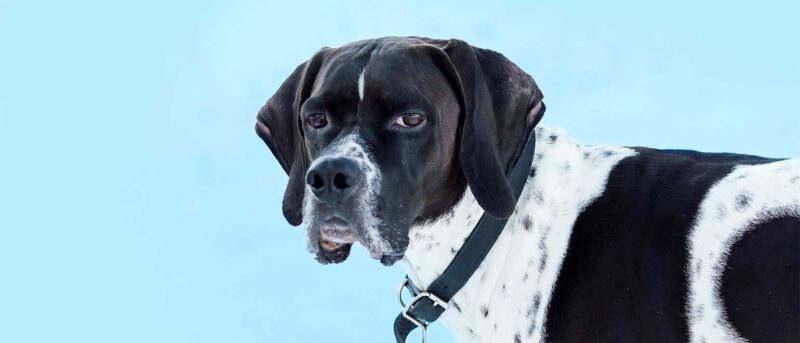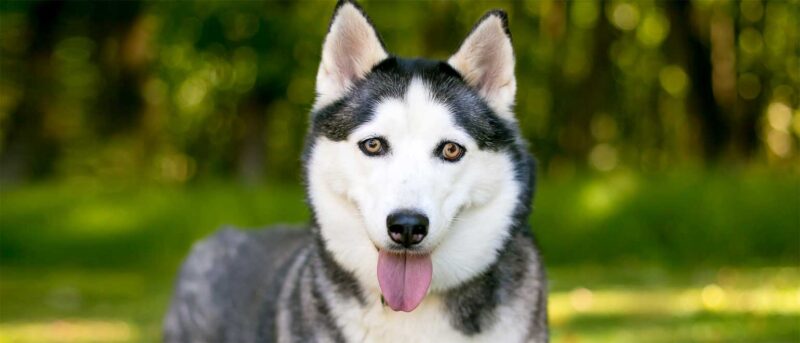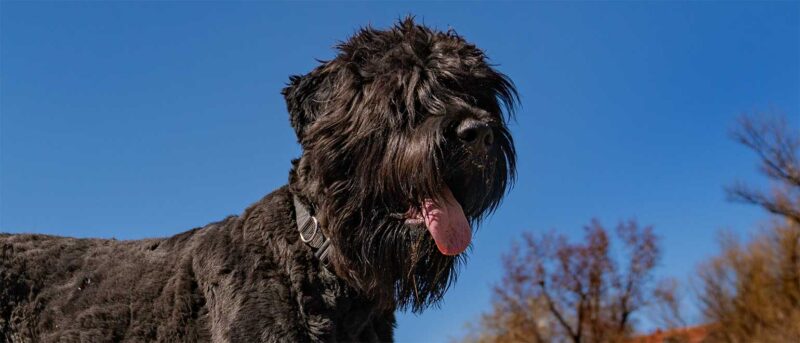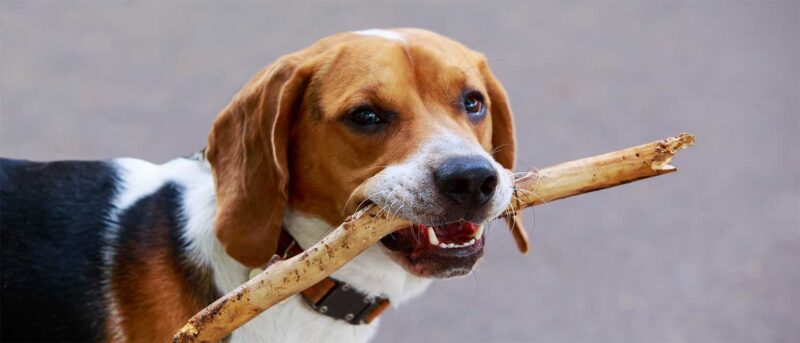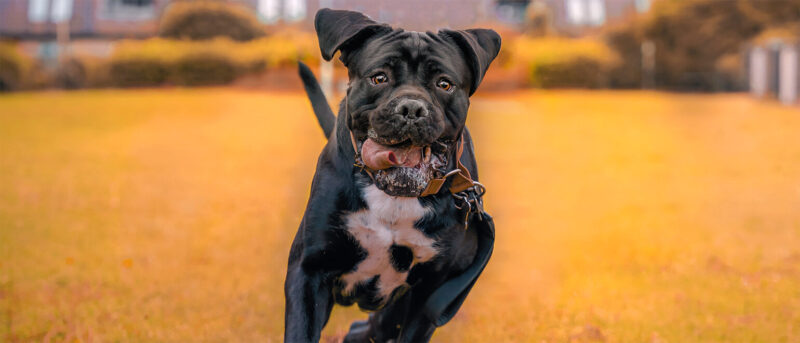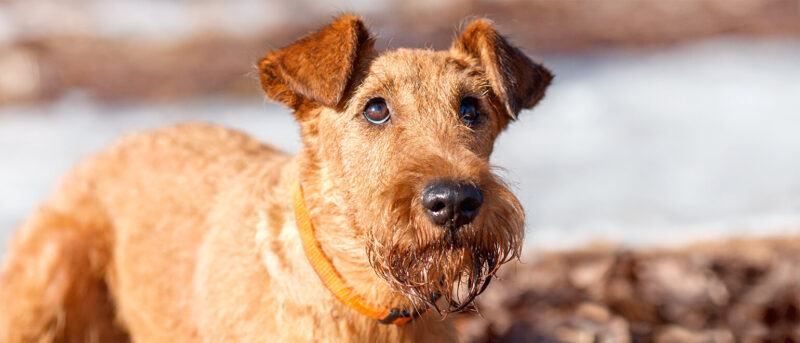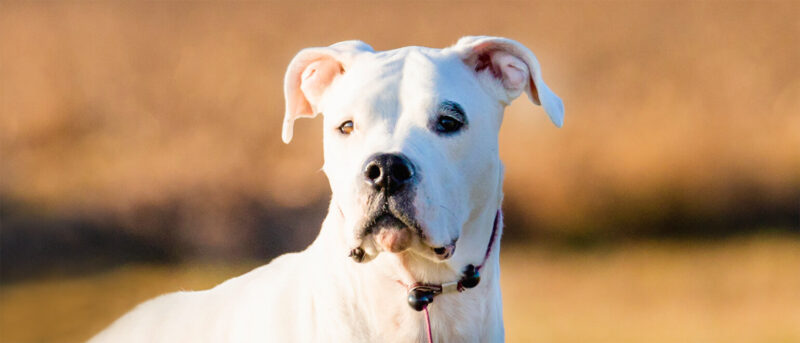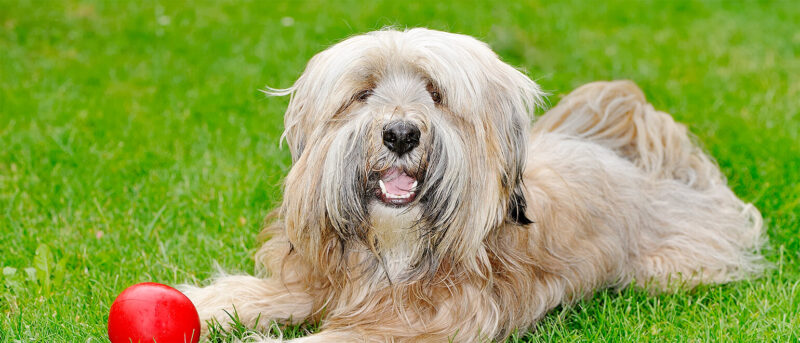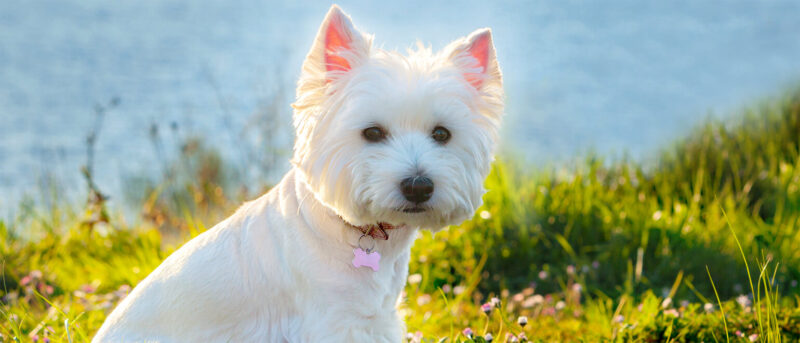Lhasa Apso Dog Breed Temperament, Personality, and FAQ Guide
Lhasa Apsos are adorable little dogs with a rich history. Originating from ancient Tibetan monasteries, this small and adaptable pet fits into any lifestyle. Lhasa Apsos are loving companions that make both comforting lapdogs and glamorous show dogs. This comprehensive dog guide covers everything you need to know about the delightful breed, the Lhasa Apso! […]
Lhasa Apsos are adorable little dogs with a rich history. Originating from ancient Tibetan monasteries, this small and adaptable pet fits into any lifestyle. Lhasa Apsos are loving companions that make both comforting lapdogs and glamorous show dogs.
This comprehensive dog guide covers everything you need to know about the delightful breed, the Lhasa Apso! After learning about these adorable fur balls, you might find yourself considering them as your next four-legged companion. We’ve also included links to reputable breeding organizations and generous rescue groups, so let’s dive into the world of Lhasa Apsos!
Lhasa Apso Dog Breed Characteristics
One of the most distinctive physical characteristics of the Lhasa Apso is its luxuriously long coat of thick, straight hair. This coat typically parts down the middle of the dog’s body from head to tail, adding to its elegant appearance. Additionally, this breed is known for its rectangular build and a tail that proudly sits high over its back.
According to The American Kennel Club, the breed standard for the Lhasa Apso includes dark brown eyes and a black nose. It is worth noting that some Lhasa Apsos do have brown noses. These non-sporting dogs generally have a lifespan of 14-15 years.
When it comes to dog shows, all dog breeds are categorized in place into groups based on size, appearance, and skill set. This helps create fair competition as it would be unrealistic to put the athletic ability of a Border Collie against the short little legs of a Lhasa Apso.
Lhasas are categorized into the non-sporting group. The category of non-sporting dogs is a bit of a catch-all as it consists of breeds that do not fit into any other classification.
Lhasa Apso Dog Breed Size
The Lhasa Apso is a petite dog, making it an ideal couch companion. Typically, males of this breed weigh between 15-18 pounds and stand approximately 10-11 inches tall. Females, on the other hand, generally weigh between 12-15 pounds and also stand about 10-11 inches in height.
Lhasa Apso Dog Breed Personality
The Lhasa Apso’s origins as watchdogs in Tibetan monasteries have left a lasting legacy in their demeanor. Even today, they exhibit sentinel-like qualities, often appearing aloof or reserved around strangers. However, behind this cautious facade lies a heart of gold, as Lhasa Apsos are fiercely loyal and deeply affectionate towards their families. Despite their reserved tendencies with strangers, many owners claim that their Lhasa Apsos have a playful sense of humor when they’re not busy with their guard duties.
Indeed, the Lhasa Apso’s historical role as home defenders and intruder deterrents explains why they have a cautious demeanor towards strangers. Lhasas have also been bred to be independent and eager to please.
Lhasa Apso Dog Exercise
Lhasas are both deeply independent and incredibly energetic. Your Lhasa Apso won’t hesitate to take matters into their own paws if you’re running late for a walk. Instead of waiting patiently, they’re likely to zip around to burn off their excess energy. In a fenced area, they’re able to find ways to amuse themselves, showcasing their independent nature. On walks, your Lhasa Apso is likely to take the lead rather than follow in your footsteps.
Although the Lhasa Apso can exercise themselves in your backyard, they cannot be fully responsible for their physical needs. This furry pup needs 30 minutes of light exercise daily. This can be done by taking your Lhasa on a walk or to a nearby dog park for some much-needed socialization.
Despite being a member of the “non-sporting” group, Lhasas are very adept at sports! This is because non-sporting dogs refer to dogs that were specifically bred for activities like hunting but are now mainly bred for show. In addition to their glamorous looks, Lhasas also do well in agility and scent tasks.
Agility and scent work competitions are both popular canine sports that require different skill sets from the dogs involved. In agility, dogs navigate through obstacle courses with guidance from their handlers, aiming for speed and accuracy. Scent work, on the other hand, is a competition that challenges dogs to use their keen sense of smell to locate hidden items scented with essential oils without assistance from their owners. The adorable and independent Lhasa Apso is well-poised to excel at both events.
Lhasa Apso Dog Breed Training
Whether they’re preparing for a show, competing in sports, or just spending their days on a couch, Lhasas all benefit from training. Practicing commands instills discipline in your pet, ensuring they behave appropriately. Additionally, structured exercise routines are an excellent way to maintain your dog’s overall health and well-being.
Unlike other dogs, the Lhasa Apso does always require socialization training but it may be helpful if you find them to be standoffish towards strangers. The best way to improve your Lhasa’s mingling abilities is to take them to a dog park. Just be sure to keep them safely on a leash until they are comfortable in the park.
Engaging your Lhasa Apso in agility training offers a fantastic blend of mental and physical stimulation while reinforcing command lessons. Even if they’re not destined to be award-winning competitive athletes, agility courses provide valuable opportunities for dogs to develop strategy, enhance memorization skills, and build stamina.
While not everyone may have the space for a full-fledged agility course in their backyard, all dogs, including Lhasa Apsos, can benefit greatly from command training. Even basic commands like sit, stay, and come are invaluable tools for reinforcing your position as the leader and establishing boundaries. This training will also refine their behavior and make other routine tasks like bath time and walks easier.
The Lhasa Apso can quickly pick up on basic commands like sit, stay, heel, come, and no. With consistent training, patience, and positive reinforcement, such as praise and their favorite treats, teaching these commands becomes an enjoyable and rewarding experience for both you and your furry friend!
Lhasa Apso Dog Breed History
Originally known as the Abso Seng Kye, the Lhasa Apso was first bred in Tibet. This breed was used as a watchdog for the Buddhist monasteries in the Himalayas. This cold weather environment is part of why Lhasas have their thick signature coat.
According to Tibetan folklore, Lhasas are the physical manifestations of the mythical Snow Lion, which protects the country. This origin story also relates to the dog’s name, the Abso Seng Kye, which translates to “Bark Lion Sentinel Dog”.
The Dalai Lama provided the first Lhasas to ever enter the United States. The 13th Dalai Lama, Thubten Gyatso, gave author C. Suydam Cutting a pair of Lhasas. After receiving this gift, the writer and world traveler single-handedly became responsible for establishing the Lhasa Apso breed in America.
This breed is also related to the Gompa Lhasa Apso, which originated in the Tibetan Drepung monastery. These dogs were bred with each other, resulting in a set of traits unique from the Lhasa Apso. Currently, this declining dog breed is being looked after by the Gompa Lhasa Apso Preservation Program.
The American Kennel Club (AKC) is a massive international organization that currently recognizes almost 200 different dog breeds. They recognized the Lhasa Apso officially in 1935, making it the 97th breed accepted by the AKC. Believe it or not, this dog breed was originally categorized as being in the Terrier Group!
Lhasa Apso Dog Breed Health Problems
Lhasa Apsos typically enjoy good health, but like any non-sporting breed, they can be prone to certain health issues, particularly related to their joints and eyes.
The best way to screen for these potential health conditions is to purchase your pet from a responsible breed that tests their dogs for common health issues.
Keratoconjunctivitis Sicca
Also known as dry eye syndrome, Keratoconjunctivitis Sicca is a condition that causes the dog’s tear ducts to malfunction. A Lhasa Apso with this condition will not be able to produce enough tears to lubricate their eyes.
There is another version of this health issue that can be more difficult to diagnose because the dog produces a normal amount of tears. These tears, however, are poor in quality and do not lubricate the eye. Dry eyes can also be caused by hypothyroidism, viral infections, and even by certain medications.
Sebaceous Adenitis
Sebaceous adenitis is a condition characterized by inflammation of the glands responsible for producing oil for your Apso’s hair. Ideally, your dog’s skin and coat should maintain a healthy balance of oil, neither overly wet nor dry. These oils are produced by the sebaceous glands of the hair follicles.
When these glands become inflamed, it disrupts the growth of new hair, leading to symptoms such as crusty, irritated skin and patches of hair loss. Sadly, the exact cause of sebaceous adenitis is still unknown.
Patellar Luxation
With a name meaning “slipping kneecap”, a luxating patella occurs when a dog’s patella, or kneecap, moves out of its normal position within the groove on the femur bone. This displacement can lead to various symptoms, including limping, kicking the affected leg out to the side, or reduced mobility.
Treatment will vary depending on the severity of each dog’s case. Some pets can be unaffected by the lowest grade of luxation.
It may be possible to manually realign the dog’s knee caps but do not attempt this without consulting a veterinarian first. More advanced levels of luxation often require surgery where the surgeon will deepen the groove in which the patella rests.
Progressive Retinal Atrophy
Progressive retinal atrophy (PRA) is a health condition that diminishes a dog’s eyesight. It primarily affects the photoreceptor cells within the retina, gradually wearing them down until complete blindness occurs. There are two main forms of PRA: inherited, also known as retinal dysplasia, and late-onset PRA.
The first form we mentioned, inherited PRA, causes dogs to be born with abnormally developed photoreceptor cells. A puppy with this genetic condition will usually be diagnosed around the 2-3 month mark.
Late-onset PRA occurs in dogs born with normal retinas. This condition happens when their photoreceptor cells deteriorate with time. Dogs are often not diagnosed with this condition until they are 3-9 years old.
Symptoms of PRA can manifest as your dogs having a fear of dark rooms, not being able to recognize family members until they smell them, and general clumsiness. Generally, dogs with PRA are rarely bred. Responsible breeders test their dogs for this inherited PRA gene.
Hip Dysplasia
Hip dysplasia is an inherited condition that can lead to arthritis in dogs. It results in the misalignment of the hip joints, causing them to painfully grind against each other. This condition is similar to patellar luxation, where the kneecap slips out of its normal position, but hip dysplasia affects only the hips, while patellar luxation primarily affects the knees.
Usually, this condition occurs in larger breeds but it frequently affects Lhasa Apsos as well. Early detection is crucial to prevent the progression of the disease and minimize the development of arthritis. Signs of hip dysplasia in Lhasa Apsos may include stiffness in the hind legs, decreased activity levels, and a “bunny-hopping” walk.
Hip dysplasia can also be aggravated by overfeeding. Since Lhasa Apsos are small dogs, their petite frame cannot support a heavy body. Overweight dogs are more prone to developing joint conditions than other pets, so be sure to talk to your vet about a nutritional diet for your Lhasa Apso to keep them healthy.
Pancreatitis
Pancreatitis is a digestive disorder characterized by inflammation of the pancreas. In a healthy pancreas, enzymes are released and activated in the small intestine to aid in digestion. However, in cases of pancreatitis, these enzymes can become activated prematurely, leading to inflammation and damage to the pancreas itself.
Symptoms of pancreatitis are very similar to other common canine health issues, so it’s important to keep a watchful eye on your pup. Signs of this condition include vomiting, belly pain, diarrhea, fever, lethargy, and dehydration.
How to Care for a Lhasa Apso Dog Breed
While Lhasa Apsos may not have as many demanding needs as some other breeds, they still require consistent care to thrive. Regular exercise appropriate for their energy level helps keep them healthy and happy. Additionally, a good grooming routine and a healthy diet will also keep them in good condition. Finally, you must give these dogs excellent eye care and proper joint support.
Check out: Full Spectrum CBD oil for dogs
Nutrition and Feeding for a Lhasa Apso Dog Breed
Feeding your Lhasa Apso a balanced diet is essential for their overall health and well-being. As a general guideline, a healthy dog typically consumes around 2.5% of their body weight in food each day, divided into two meals. However, it’s important to note that the exact amount of food your dog requires may vary based on factors such as age, weight, activity level, and any underlying health conditions. The biggest dietary concern for this breed is overfeeding.
As the average weight of a Lhasa is 15 pounds, it should get around 6 ounces of dry dog food a day. A puppy, on the other hand, should get 6% of its body weight in dog food a day. Using that as our guide, a Lhasa puppy weighs about 8 lbs, so it would need about 7.5 ounces of puppy food a day.
The American Kennel Club (AKC) recommends that the Lhasa Apso requires a high level of fat and protein. Try to select dog food with a fat percentage above 14%. Additionally, protein plays a crucial role in maintaining muscle health and overall well-being. However, the specific source of protein (chicken, beef, salmon, etc) can vary based on your Lhasa Apso’s preferences and any dietary sensitivities they may have.
Regular grooming is essential for maintaining the health and lush appearance of your Lhasa Apso’s long coat. In addition to grooming, certain natural ingredients can help enhance the shine and overall condition of their fur. Ingredients such as eggs, chia seeds, almonds, and coconut are rich in vitamins, minerals, and healthy fats that support skin and coat health.
While setting dog bowls directly on the ground works well for many breeds, there’s no one-size-fits-all bowl height. It’s important that dogs don’t have to strain their necks to eat comfortably. Thankfully, determining the correct bowl height is simple.
To determine the ideal bowl height for your Lhasa Apso, measure the distance from its paws to the top of its shoulders while standing. Then, subtract 5 inches from this measurement to find the perfect bowl height. For example, since Lhasa Apsos typically stand around 11 inches tall, a suitable bowl height would be approximately 6 inches off the ground.
Coat Color And Grooming
The Lhasa is a small dog with much of its weight coming from their glorious double coat. This coat comprises an insulating underlayer and a top layer of protective guard hairs, which were crucial for weathering the harsh conditions of their Himalayan origins.
These pups can come in black and tan, white, black, and a variety of brown shades with some ever veering towards red.
How to Groom
Maintaining the coat of a Lhasa Apso requires a diligent grooming regimen. While grooming, take the opportunity to inspect your Lhasa for any abnormalities such as bumps or signs of inflammation. If you notice anything unusual or concerning, immediately consult with a veterinarian.
While many breeds can be groomed as needed, the Lhasa Apso must be bathed every 2-3 weeks. This is because the Lhasa Apso’s long coat hair can attract bacteria. Show dogs are usually groomed weekly and the night before each event.
If you are in the early stages of building trust with your Lhasa Apso when you first groom them, start with some light brushing, and giving them treats as you groom them. Accidentally pulling their hair can cause the Lhasa to have feelings of distrust.
Due to their small size, the Lhasa can be conveniently bathed in a small sink. While washing them, keep their hair parted naturally down the middle of their body. Just as with human hair, start with shampoo, then conditioner, and apply a detangling spray after washing to prevent mats.
Given this breed’s susceptibility to eye conditions, proper face washing is crucial for maintaining their eye health. When washing their face, it’s essential to use a canine shampoo that is pH-neutral and unscented, particularly for use around the areas of their eyes, ears, and nose. While grooming around their eyes may not prevent conditions like dry eye syndrome, it helps remove any accumulated bacteria, reducing the risk of eye infections and irritation.
It is also recommended that you blow-dry your Lhasa instead of rubbing or towel-drying them. The friction caused by rubbing your dog with a towel will cause their dense coat to mat. Patting them dry may not effectively dry the water toward the bottom layer of their topcoat. Trapped moisture can potentially lead to skin infections or hot spots.
Children And Other Pets
The Lhasa Apso is a wonderful family dog. Unlike some Terrier breeds, they do not have a high prey drive and will not chase after small animals and children. The largest area of concern with this breed is building trust.
Lhasa are not aggressive but it is best to keep them on a leash when they meet any other pets or children for the first time in your household. This is not for the safety of others as much as it is for the safety of your Lhasa Apso who may be considered prey by bigger breeds.
Given their small size, it’s important to supervise Lhasa Apsos around children who may not have learned how to handle small dogs properly. When introducing these dogs to new people, it is best to do it in a neutral area, especially for first-time encounters.
Canines can behave aggressively towards animals or people who they feel are intruding upon their territory. Dog parks are an excellent place to introduce dogs as they are neutral territory that neither dog will feel territorial over.
Rescue Groups
Thankfully, you don’t have to be a Buddhist monk to get your very own Lhasa Apso. There are so many great resources out there like American Kennel Club (AKC), and Petfinder that can help you find dogs for sale.
Petfinder is an online platform dedicated to helping pet lovers find forever homes for animals in need. With its user-friendly interface, users can easily search for pets based on various criteria such as size, gender, coat length, and compatibility with other pets. You can also communicate directly with the seller/rescue and determine if the dog has any special needs.
American Lhasa Apso Club is the official breed organization for this dog. Prospective Lhasa Apso owners can review their excellent Rescue Handbook for further information.
Rescue groups play a vital role in saving Lhasas and other dogs from euthanasia in shelters by operating locally and pulling them from shelters. The American Kennel Club (AKC) has established over 450 Rescue Network groups across the United States and anyone can search their database to find a nearby rescue organization.
Breed Organizations
After adopting your Lhasa Apso, make sure to register them with a kennel club. The helpful organizations help to connect owners, preserve the breed, and promote Lhasa health. The American Kennel Club (AKC) is considered the largest kennel club in the world.
While the American Kennel Club (AKC) provides valuable resources for dog care, it relies on the support of breed-specific organizations known as Parent Clubs to assist in the mission of promoting responsible dog ownership and breed preservation. The official Parent Club for the Lhasa Apso breed recognized by the AKC is the American Lhasa Apso Club (ALAC).
Founded in 1959, The ALAC was the first of its kind in the United States. This terrific non-profit organization also works with regional Lhasa Apso groups. Make sure to check out their list of member clubs to see if there’s a breed organization near you!
More About This Dog Breed
Indeed, the Lhasa Apso holds a remarkable achievement as one of the longest-lived breeds in modern times. While many dog breeds with specific historical purposes have evolved or even disappeared over time, the Lhasa Apso, affectionately known as the “Bark Lion Sentinel Dog,” has remained true to its original form and purpose.
Check out the American Kennel Club and other organizations for more information on this breed and opportunities to meet some Lhasas! Once you adopt your pooch, don’t forget to register them with the American Lhasa Apso Club. For more pet care advice and the world’s best dog treats, Penelope’s Bloom has you covered!







